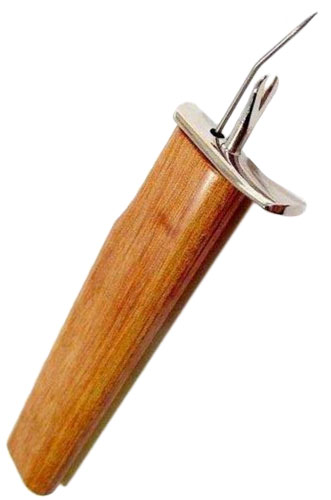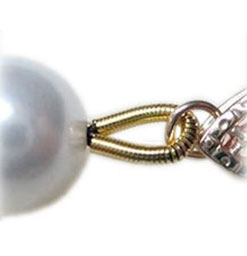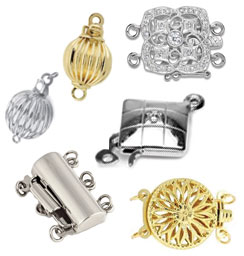Pearl and Bead Stringing - we undertake pearl stringing and also restring other types of beads. We can repair or replace clasps.


Pearl and Bead Stringing - we undertake pearl stringing and also restring other types of beads. We can repair or replace clasps.
There are different methods used to string pearls and beads using a variety of thread types.
Plain Stringing- this is where pearls/beads are strung on to a thread in succession with knots only at either end. The ends are finished off with a very finely coiled wire, known as gimp wire or french wire, that forms a flexible tube like a spring. This is threaded over the cord to cover the exposed ends.
Knotted Stringing- this is where a knot is tied between each pearl/bead so If the string breaks only one pearl/bead can fall off. The knots help maintain even spacing between pearls/beads preventing them rubbing together and reducing wear on string from bead movement. This method is stronger and lasts longer but is more expensive.
Threads- the threads used are normally Cotton, Silk or Nylon, the strongest being Nylon. Silk and Cotton tend to stretch.


Clasps- we can repair, replace or supply most kinds of clasps. Due to the wide variety of styles we recommend that the item is sent for an estimate before and please note that in most cases the item will have to be restrung as well.


Supplying- missing pearls, beads or extending can be difficult due to the difficulty of finding matching colours. We can find and replace with the nearest matching available.
Counting- before sending a row of pearls or beads for restringing do count the number of beads or pearls you are sending. Do not rely on the measurement as this changes when the rows are restrung as a row of pearls that needs restringing is usually stretched. The restringing process removes the slack and the length is reduced although the same number of pearls have been restrung. By counting the pearls before sending to us will provide you with a method of reassuring your customer that they haven't lost any pearls even though the length is shorter.
Stringing takes about 2/3 week
Types of Pearls- the difference between natural, cultured and imitation pearls.
Natural Pearls- when a mollusc is invaded by a parasite or a foreign object that it can't eject, a process known as encystation covers the irritant in successive concentric layers of nacre (also known as Mother of Pearl); a pearl is eventually formed. The process of natural pearl formation is so rare that only 1 in 10,000 shells may produce a gem-quality pearl. As the layers of nacre tend to maintain the irregular shape of the original irritant, most natural pearls are irregularly shaped. Natural pearls which are round or spherical in shape are even more rare. Uniform natural pearls are extremely rare and very expensive.
Cultured Pearls- in the early 20th century demand for pearls led to Japanese scientists developing cultured pearls. By planting a polished bead made from special mussel shell along with a small graft of mantle tissue from a live oyster; the molluscs produce pearls. A typical fresh water mussel can produce up to 16-32 pearls at a time whereas the salt water oyster can only produce 1 or 2 pearls at a time. Cultivation takes from two to four years depending on conditions, variety and whether it is a fresh or salt water mollusc.
Imitation or simulated pearls- these are entirely man made. A bead is dipped into a mixture based on crushed fish scales known as "essence d'orient". This coats a bead and produces an imitation pearl. Other lower quality imitations may be made from plastic or ceramics. These are used for costume jewellery and provide an inexpensive way of imitating cultured pearls.
Identifying the type of pearl-
Caring for pearls-